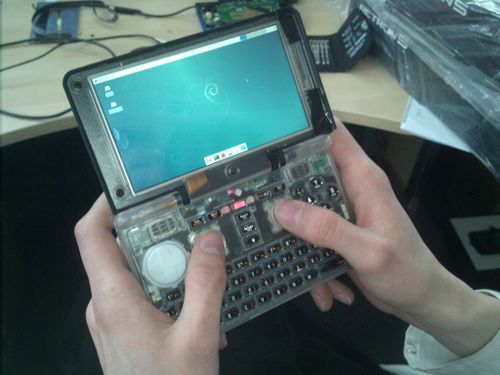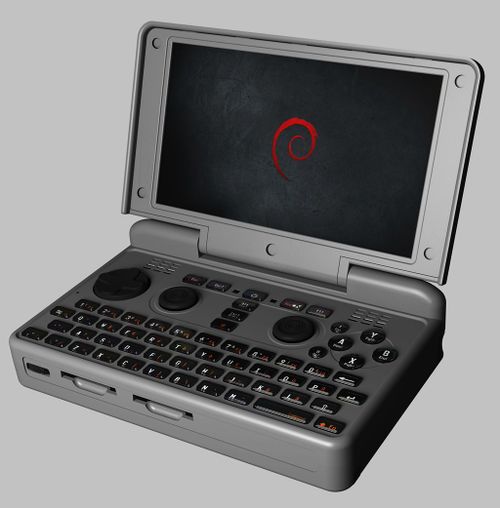Hardware overview: Difference between revisions
Jump to navigation
Jump to search
m (→Storage) |
m (→Connectivity: Add updated wifi number) |
||
| Line 34: | Line 34: | ||
=== Connectivity === | === Connectivity === | ||
* Integrated [[WiFi|Wi-Fi]] 802.11a/b/g/n and [[Bluetooth]] 4.1 | * Integrated [[WiFi|Wi-Fi]] 4 (802.11a/b/g/n) and [[Bluetooth]] 4.1 | ||
* Optional 3G/4G/UMTS [[Modem]] and [[GPS]] | * Optional 3G/4G/UMTS [[Modem]] and [[GPS]] | ||
* [[Audio|Headset-Port]] | * [[Audio|Headset-Port]] | ||
Revision as of 22:40, 9 November 2020


The Pyra is a perfect pocket device for everyday computing, gaming, emulation or hacking. It is a unique combination of a gaming handheld and a mini-laptop (approximately the size of the original Gameboy), running plain Debian Linux as OS. It is the successor of the OpenPandora.
Specifications
Case
Main article: Case
- Polycarbonate case, 140 x 74 x 29 mm
Input Devices
- Gaming controls (DPad, 4 shoulder buttons, 6 face buttons)
- Two accurate analog controls (Nubs) with push-button
- QWERTY Keyboard with backlight
- Touchscreen
- Analog volume wheel
Internals
- 6000mAh Battery
- 720p 5" LCD Display (Interchangeable in the Future)
- Vibration motor
- Various sensors (accelerometer, gyro-sensor, etc.)
- Three PCBs;
- An interchangeable CPU-Board:
-
- 2x ARM Cortex-A15 @ 1.5Ghz with NEON SIMD
- 2x ARM Cortex-M4
- PowerVR™ SGX544-MP2 (see GPU)
- Vivante GC320 2D Accelerator
- 32GB of eMMC flash for the preinstalled OS
- A Mainboard where all peripherals connect
- and a Displayboard which interfaces the display and the touchscreen to the hinge cable (which connects the case lid components to the Mainboard)
Connectivity
- Integrated Wi-Fi 4 (802.11a/b/g/n) and Bluetooth 4.1
- Optional 3G/4G/UMTS Modem and GPS
- Headset-Port
- 1x HDMI Video Out
- USB ports, permitting many Peripherals to be connected:
- 2x Full-size USB 2.0 Host (one can be used as eSATA with a small Adapter)
- 1x Micro USB 3.0 OTG
- 1x Micro USB (Debug and Charging)
- Status LEDs
Storage
Main article: Storage
- 32GB Internal eMMC
- 1x Internal MicroSDHC slot
- 2x SDXC card slot